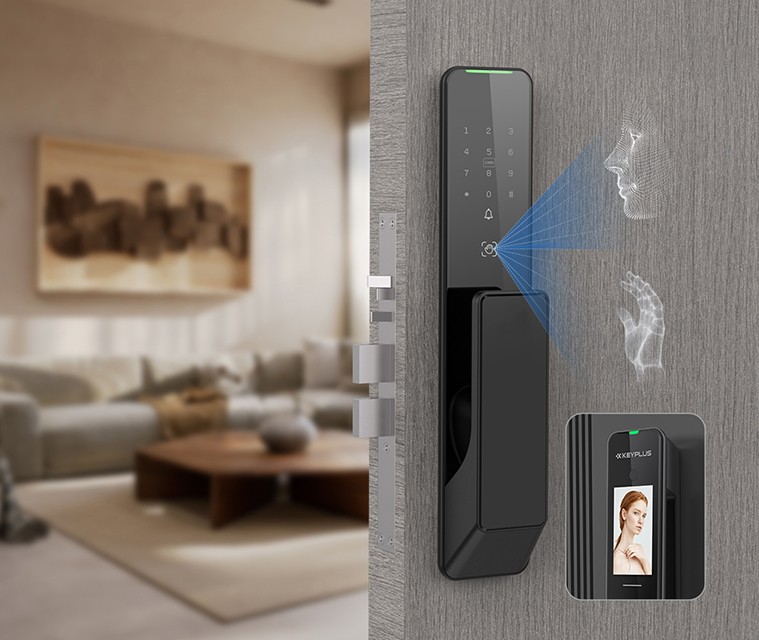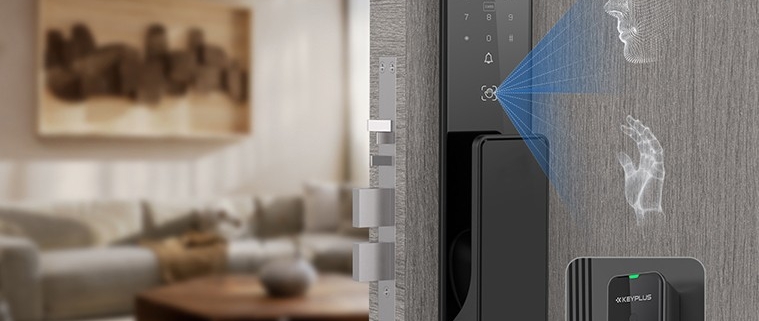How Does a Smart Lock Work Without a Key?
In today’s fast-paced world, smart locks are revolutionizing home security by offering keyless entry. No more fumbling for keys or worrying about lost copies—just seamless, convenient access. But how exactly do these devices work without a traditional key? This article explores the technology behind smart locks, their key features, and why they’re becoming a must-have for modern homes.
1. What Is a Smart Lock?
A smart lock is an electronic locking device that replaces or enhances a traditional deadbolt. Instead of requiring a physical key, it uses wireless communication, biometrics, or digital codes to grant access. Many smart locks integrate with home automation systems, allowing remote control via smartphones or voice assistants.
2. How Do Smart Locks Work Without a Key?
Smart locks eliminate the need for keys by using alternative authentication methods. Here’s how they function:
A. Wireless Connectivity (Bluetooth, Wi-Fi, or Z-Wave/Zigbee)
Most smart locks connect to a home network via Bluetooth, Wi-Fi, or other wireless protocols like Z-Wave/Zigbee. This allows:
-
Smartphone Access: Users can lock/unlock doors using a mobile app.
-
Remote Control: Homeowners can grant access from anywhere via the internet.
-
Integration with Smart Home Systems: Compatibility with Amazon Alexa, Google Assistant, or Apple HomeKit enables voice commands.
B. Keypad Entry (PIN Codes)
Many smart locks feature a built-in keypad for entering a unique PIN code. Benefits include:
-
No need to carry a key.
-
Temporary codes for guests or service providers.
-
Automatic lockout after too many incorrect attempts (enhanced security).
C. Biometric Authentication (Fingerprint or Facial Recognition)
High-end smart locks use biometric scanners to verify identity.
-
Fingerprint scanners compare stored prints to grant access.
-
Facial recognition (less common) uses cameras to identify authorized users.
D. NFC/RFID Technology (Key Cards or Fobs)
Some smart locks support Near Field Communication (NFC) or Radio-Frequency Identification (RFID), allowing:
-
Tap-to-unlock functionality with key cards or fobs.
-
Hotel-style access for short-term rentals.
E. Mechanical Override (Backup Keys or Emergency Power)
While smart locks eliminate daily key use, many include:
-
Physical key slots for emergencies.
-
Battery backups (AA batteries or rechargeable power) to prevent lockouts during power failures.

3. Benefits of Keyless Smart Locks
A. Convenience
-
No more lost or forgotten keys.
-
Grant access remotely to family, friends, or delivery personnel.
-
Auto-lock features ensure doors are never left unlocked.
B. Enhanced Security
-
No physical keys to pick or duplicate.
-
Real-time notifications when someone enters.
-
Tamper alerts for forced entry attempts.
C. Smart Home Integration
-
Works with voice assistants (e.g., “Alexa, lock the front door”).
-
Syncs with security cameras and alarms.
4. Potential Drawbacks
-
Power Dependency: Requires batteries, which need occasional replacement.
-
Hacking Risks: Wireless signals could be intercepted (though encryption minimizes this risk).
-
Cost: More expensive than traditional locks.
5. Popular Smart Lock Brands
-
Keyplus Smart Lock (Wi-Fi/Bluetooth/Face recognition/fingerprint recognition/palmprint)
6. Conclusion
Smart locks provide a secure, convenient alternative to traditional keys by leveraging wireless technology, biometrics, and digital codes. While they come with some trade-offs (like battery maintenance), their benefits—remote access, smart home integration, and advanced security—make them an excellent choice for modern homeowners.
As technology evolves, we can expect even more innovations, such as AI-powered recognition and improved anti-hacking measures. For now, smart locks are already transforming how we secure and access our homes—key-free and hassle-free.
Would you switch to a smart lock? The future of home security is here, and it doesn’t need a key.



